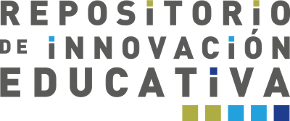Por favor, use este identificador para citar o enlazar este ítem:
https://www.innovacioneducativa.unam.mx:8443/jspui/handle/123456789/7419Registro completo de metadatos
| Campo DC | Valor | Lengua/Idioma |
|---|---|---|
| dc.contributor.author | Gallegos García, Yazmín; | - |
| dc.contributor.author | García Ramírez, María Teresa | - |
| dc.date.accessioned | 2023-03-24T01:03:43Z | - |
| dc.date.available | 2023-03-24T01:03:43Z | - |
| dc.date.created | 2022 | - |
| dc.date.issued | 2022 | - |
| dc.identifier.issn | 1665-6180 | - |
| dc.identifier.uri | http://132.248.48.19:8080/jspui/handle/123456789/7419 | - |
| dc.description.abstract | Abstract The objective of this documentary review was to analyze the notion of educational digital inclusión and establish the boundaries of the concept in relation to other terms. The conceptual mapping method was chosen (Tobón, 2004), wich consists of four phases: 1) search for documents relevant to the research problem, 2) definition of inclusion and exclusion criteria, 3) data analysis based on eight axes, and 4) interpretation of the results. A total of 40 documents were reviewed from the databases Dialnet and SciELO, as well as from the Fundación Ceibal repository. The results obtained make it possible to establish that it is often difficult to relate the term with educational inclusion (higher category) given that the latter is oriented towards equalize the conditions. In this sense, the link between both concepts has permeated a vision focused on the implementation of actions and strategies that, for the most part, do not consider the particularities of the institutions to which they are directed. Likewise, its association with the term innovation has weighed on the figure of the teacher, since it is assumed that the insertion of technological artifacts is enough to achieve innovative uses, without considering that the inclusion of these tools must be accompanied by the corresponding literacy processes. | - |
| dc.language.iso | es | - |
| dc.title | Inclusión digital educativa: una cartografía conceptual | - |
| dc.type | journalArticle | - |
| dcterms.bibliographicCitation | Gallegos García, Yazmín, & García Ramírez, María Teresa. (2022). Inclusión digital educativa: una cartografía conceptual. Apertura (Guadalajara, Jal.), 14(1), 132-147. Epub 14 de septiembre de 2022.https://doi.org/10.32870/ap.v14n1.2118 | - |
| dc.identifier.sinne | SCI303 | - |
| dc.identifier.url | http://www.scielo.org.mx/pdf/apertura/v14n1/2007-1094-apertura-14-11-132.pdf | - |
| dc.subject.keywords | TIC | - |
| dc.subject.keywords | brecha digital | - |
| dc.subject.keywords | cartografía conceptual | - |
| dc.subject.keywords | Digital Gap | - |
| dc.subject.keywords | Inclusión digital educativa | - |
| dc.subject.keywords | ICT | - |
| dc.subject.keywords | Conceptual Mapping | - |
| dc.subject.keywords | Digital Inclusion | - |
| dc.relation.fuente | SciELO México | - |
| dc.relation.journal | Apertura (Guadalajara, Jal.) | - |
| dc.source.novolpages | 14(1):132-147 | - |
| dc.identifier.doi | 10.32870/ap.v14n1.2118 | - |
| Aparece en las colecciones: | Artículos científicos y académicos | |
Ficheros en este ítem:
No hay ficheros asociados a este ítem.
Los ítems de DSpace están protegidos por copyright, con todos los derechos reservados, a menos que se indique lo contrario.


